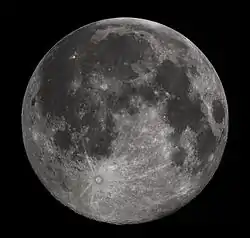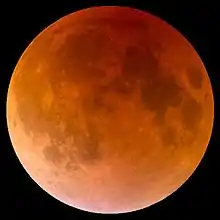July 1982 lunar eclipse
The moon passed through the center of the Earth's shadow.
| Total Lunar Eclipse July 6, 1982 | |
|---|---|
| (No photo) | |
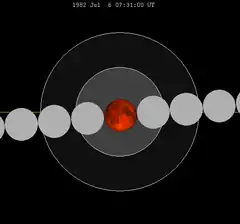 The moon passes west to east (right to left) across the Earth's umbral shadow, shown in hourly intervals. | |
| Series | 129 (36 of 71) |
| Gamma | -0.0579 |
| Duration (hr:mn:sc) | |
| Totality | 1:45:44 |
| Partial | 3:55:35 |
| Penumbral | 6:13:51 |
| Contacts (UTC) | |
| P1 | 04:23:58 |
| U1 | 05:33:07 |
| U2 | 06:38:03 |
| Greatest | 07:30:54 |
| U3 | 08:23:47 |
| U4 | 09:28:42 |
| P4 | 10:37:49 |
A total lunar eclipse took place on July 6, 1982.
Visibility
It was seen completely over North and South America, seen rising over Australia, and setting over Western Africa.
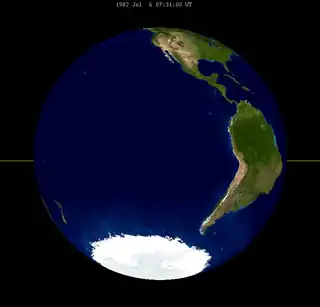
Related eclipses
There are seven eclipses in 1982, the maximum possible, including 4 partial solar eclipses: January 25, July 20, June 21, and December 15.
Lunar year series
| Lunar eclipse series sets from 1980–1984 | ||||||||
|---|---|---|---|---|---|---|---|---|
| Descending node | Ascending node | |||||||
| Saros | Date Viewing |
Type Chart |
Gamma | Saros | Date Viewing |
Type Chart |
Gamma | |
| 109 | 1980 Jul 27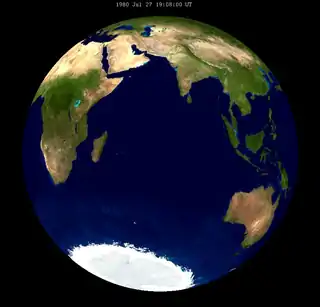 |
Penumbral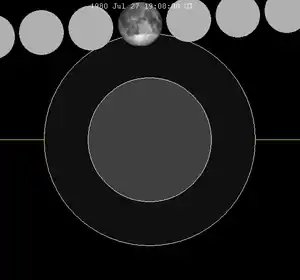 |
1.41391 | 114 | 1981 Jan 20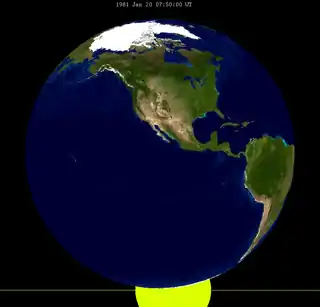 |
Penumbral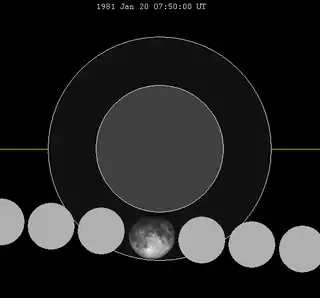 |
-1.01421 | |
| 119 | 1981 Jul 17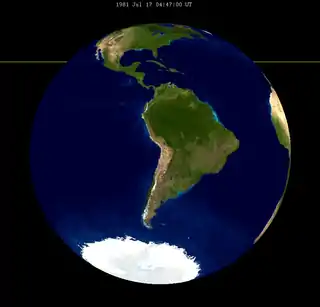 |
Partial |
0.70454 | 124 | 1982 Jan 09 |
Total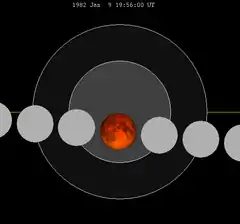 |
-0.29158 | |
| 129 | 1982 Jul 06 |
Total |
-0.05792 | 134 | 1982 Dec 30 |
Total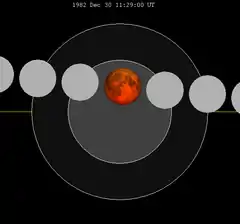 |
0.37579 | |
| 139 | 1983 Jun 25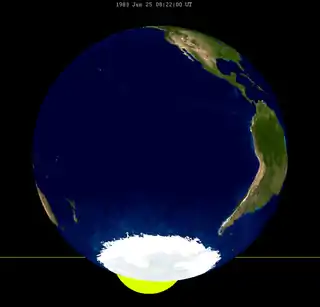 |
Partial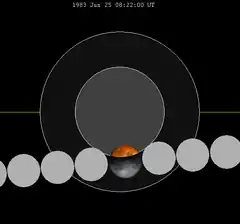 |
-0.81520 | 144 | 1983 Dec 20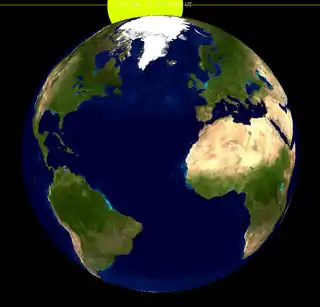 |
Penumbral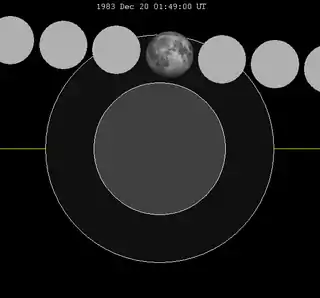 |
1.07468 | |
| 149 | 1984 Jun 13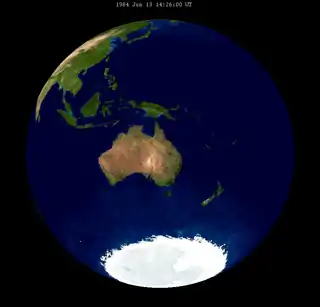 |
Penumbral |
-1.52403 | |||||
| Last set | 1980 Aug 26 | Last set | 1980 Mar 13 | |||||
| Next set | 1984 May 26 | Next set | 1984 Nov 20 | |||||
Saros series
Lunar saros series 129, repeating every 18 years and 11 days, containing 71 events, has 11 total lunar eclipses. The first total lunar eclipse of this series was on May 24, 1910, and last will be on September 8, 2090. The two longest occurrence of this series were on July 6, 1982 and July 16, 2000 when totality lasted 106 minutes.
| Greatest | First | |||
|---|---|---|---|---|
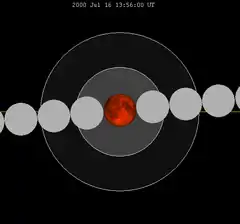 The greatest eclipse of the series occurred on 2000 Jul 16, lasting 106 minutes. |
Penumbral | Partial | Total | Central |
| 1351 Jun 10 | 1513 Sep 15 | 1910 May 24 | 1946 Jun 14 | |
| Last | ||||
| Central | Total | Partial | Penumbral | |
| 2036 Aug 7 | 2090 Sep 8 | 2469 Apr 26 | 2613 Jul 24 | |
| 1910 May 24 | 1928 Jun 3 | 1946 Jun 14 | |||
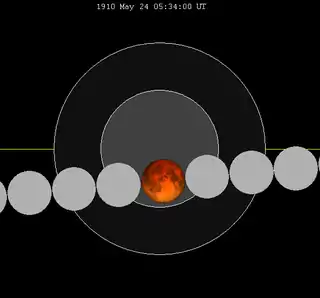 |
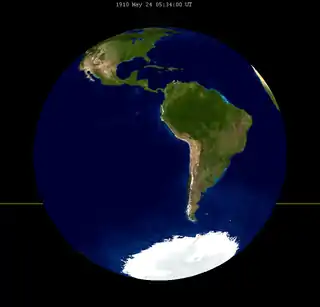 |
 |
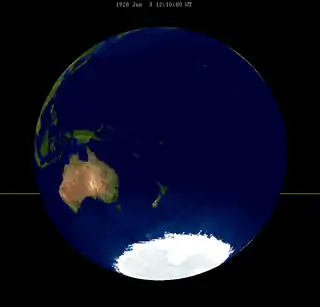 |
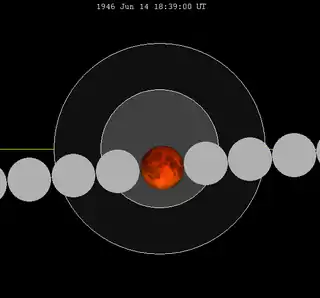 |
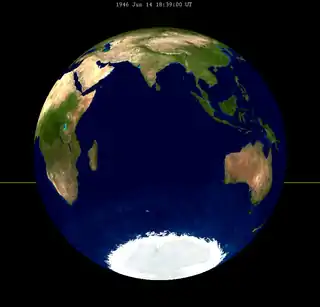 |
| 1964 Jun 25 | 1982 Jul 6 | 2000 Jul 16 | |||
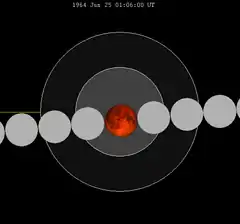 |
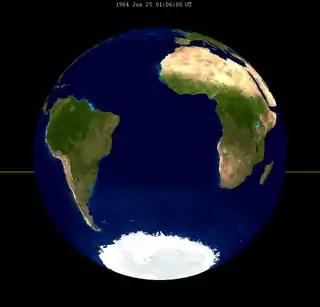 |
 |
 |
 |
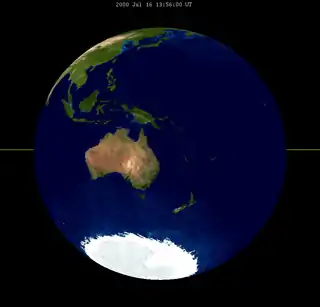 |
| 2018 Jul 27 | 2036 Aug 7 | 2054 Aug 18 | |||
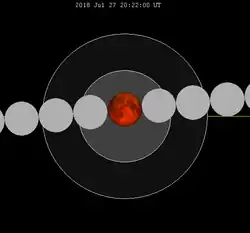 |
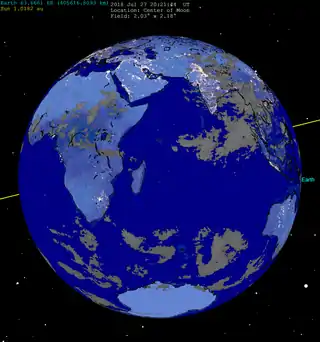 |
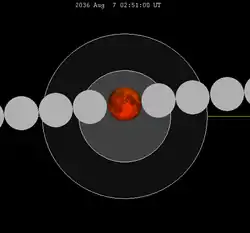 |
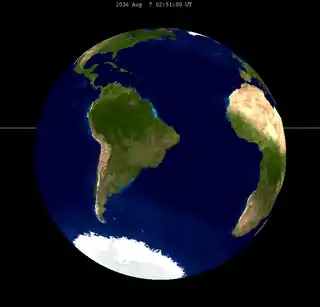 |
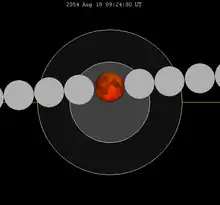 |
 |
| 2072 Aug 28 | 2090 Sep 8 | ||||
 |
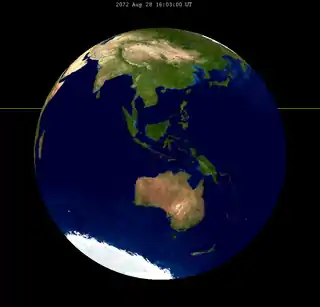 |
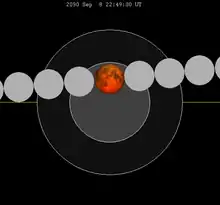 |
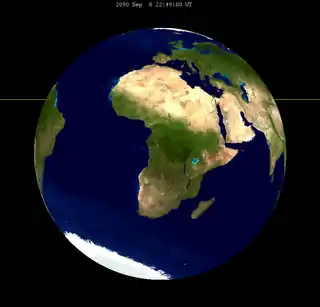 | ||
It last occurred on June 25, 1964 and will next occur on July 16, 2000.
This is the 36th member of Lunar Saros 129. The previous event was the June 1964 lunar eclipse. The next event is the July 2000 lunar eclipse. Lunar Saros 129 contains 11 total lunar eclipses between 1910 and 2090. Solar Saros 136 interleaves with this lunar saros with an event occurring every 9 years 5 days alternating between each saros series.
Inex series
The inex series repeats eclipses 20 days short of 29 years, repeating on average every 10571.95 days. This period is equal to 358 lunations (synodic months) and 388.5 draconic months. Saros series increment by one on successive Inex events and repeat at alternate ascending and descending lunar nodes.
This period is 383.6734 anomalistic months (the period of the Moon's elliptical orbital precession). Despite the average 0.05 time-of-day shift between subsequent events, the variation of the Moon in its elliptical orbit at each event causes the actual eclipse time to vary significantly. It is a part of Lunar Inex series 39.
All events in this series listed below and more are total lunar eclipses.
| Ascending node | Descending node | Ascending node | Descending node | ||||
|---|---|---|---|---|---|---|---|
| Saros | Date | Saros | Date | Saros | Date | Saros | Date |
| 96 | 1027 Apr 23 | 97 | 1056 Apr 2 | 98 | 1085 Mar 14 | 99 | 1114 Feb 21 |
| 100 | 1143 Feb 1 | 101 | 1172 Jan 13 | 102 | 1200 Dec 22 | 103 | 1229 Dec 2 |
| 104 | 1258 Nov 12 | 105 | 1287 Oct 22 | 106 | 1316 Oct 2 | 107 | 1345 Sep 12 |
| 108 | 1374 Aug 22 | 109 | 1403 Aug 2 | 110 | 1432 Jul 13 | 111 | 1461 Jun 22 |
| 112 | 1490 Jun 2 | 113 | 1519 May 14 | 114 | 1548 Apr 22 | 115 | 1577 Apr 2 |
| 116 | 1606 Mar 24 | 117 | 1635 Mar 3 | 118 | 1664 Feb 11 | 119 | 1693 Jan 22 |
| 120 | 1722 Jan 2 | 121 | 1750 Dec 13 | 122 | 1779 Nov 23 | 123 | 1808 Nov 3 |
| 124 | 1837 Oct 13 | 125 | 1866 Sep 24 | 126 | 1895 Sep 4 | 127 | 1924 Aug 14 |
| 128 | 1953 Jul 26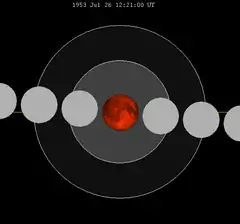 |
129 | 1982 Jul 6 |
130 | 2011 Jun 15 |
131 | 2040 May 26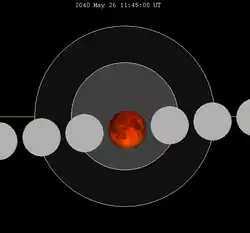 |
| 132 | 2069 May 6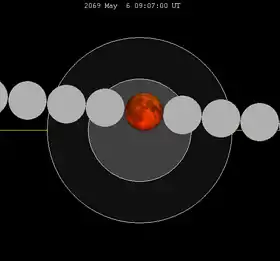 |
133 | 2098 Apr 15 |
134 | 2127 Mar 28 | 135 | 2156 Mar 7 |
| 136 | 2185 Feb 14 | 137 | 2214 Jan 27 | 138 | 2243 Jan 7 | 139 | 2271 Dec 17 |
| 140 | 2300 Nov 27 | 141 | 2329 Nov 7 | 142 | 2358 Oct 18 | 143 | 2387 Sep 28 |
| 144 | 2416 Sep 7 | 145 | 2445 Aug 17 | 146 | 2474 Jul 29 | ||
Half-Saros cycle
A lunar eclipse will be preceded and followed by solar eclipses by 9 years and 5.5 days (a half saros).[1] This lunar eclipse is related to two total solar eclipses of Solar Saros 136.
| June 30, 1973 | July 11, 1991 |
|---|---|
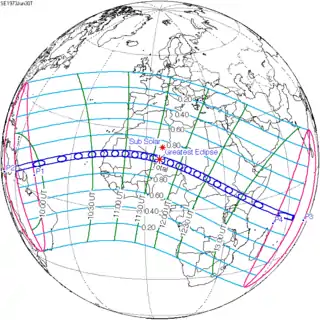 |
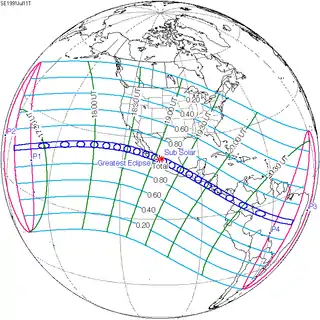 |
See also
- List of lunar eclipses
- List of 20th-century lunar eclipses
Notes
- Mathematical Astronomy Morsels, Jean Meeus, p.110, Chapter 18, The half-saros
External links
References
- Bao-Lin Liu, Canon of Lunar Eclipses 1500 B.C.-A.D. 3000, 1992
